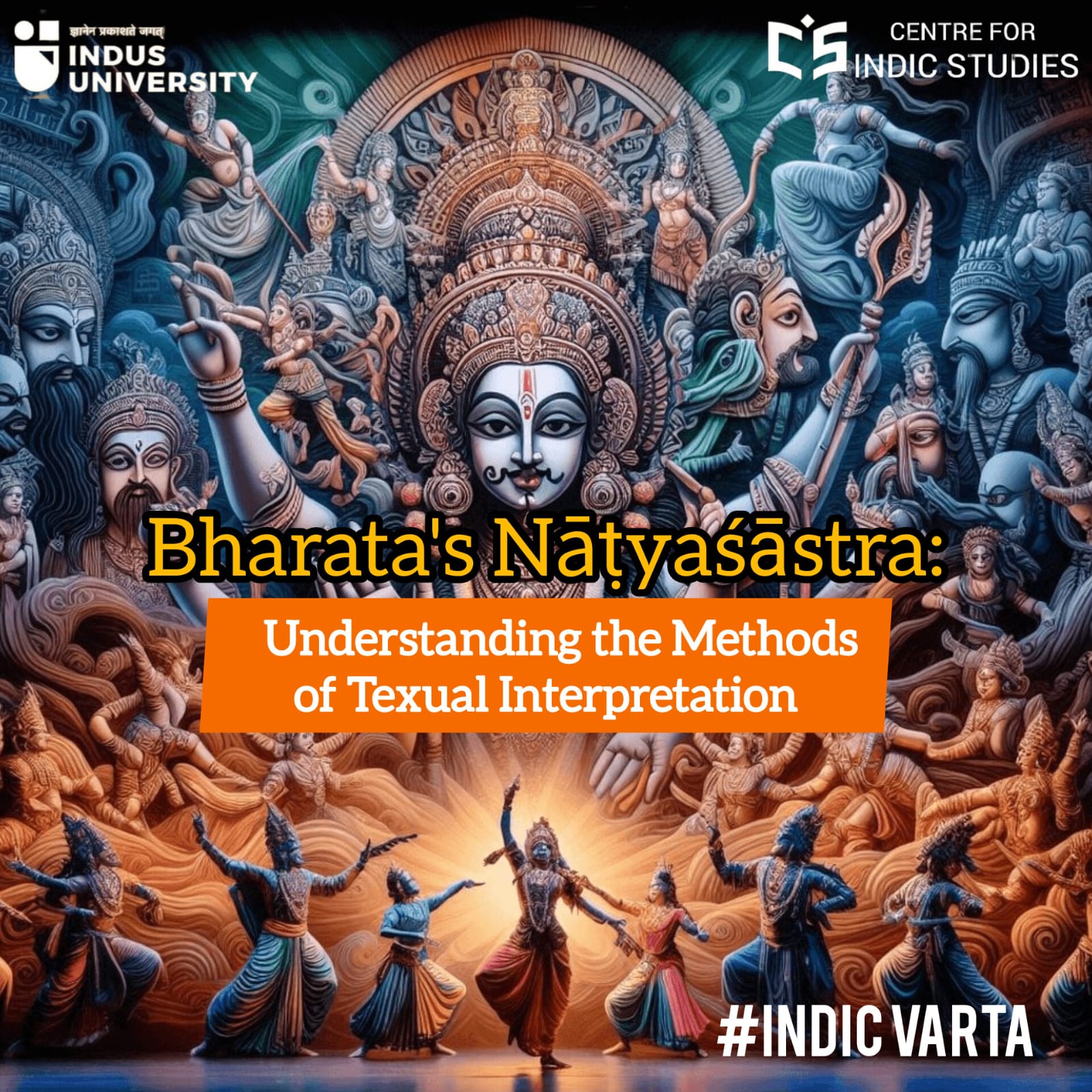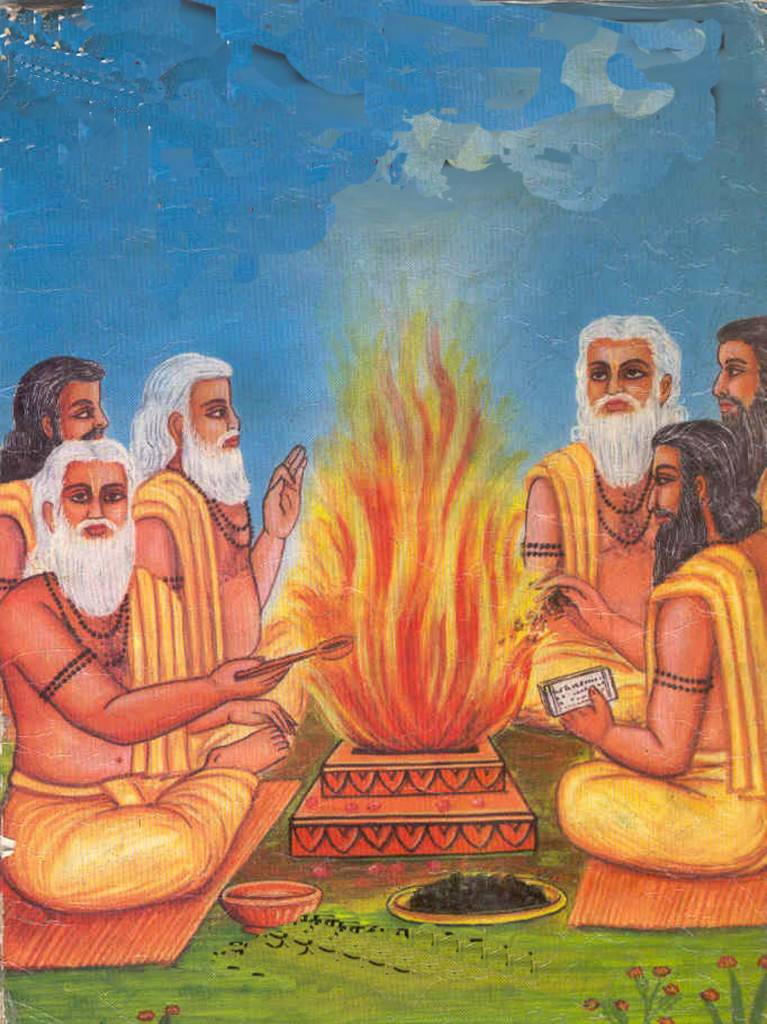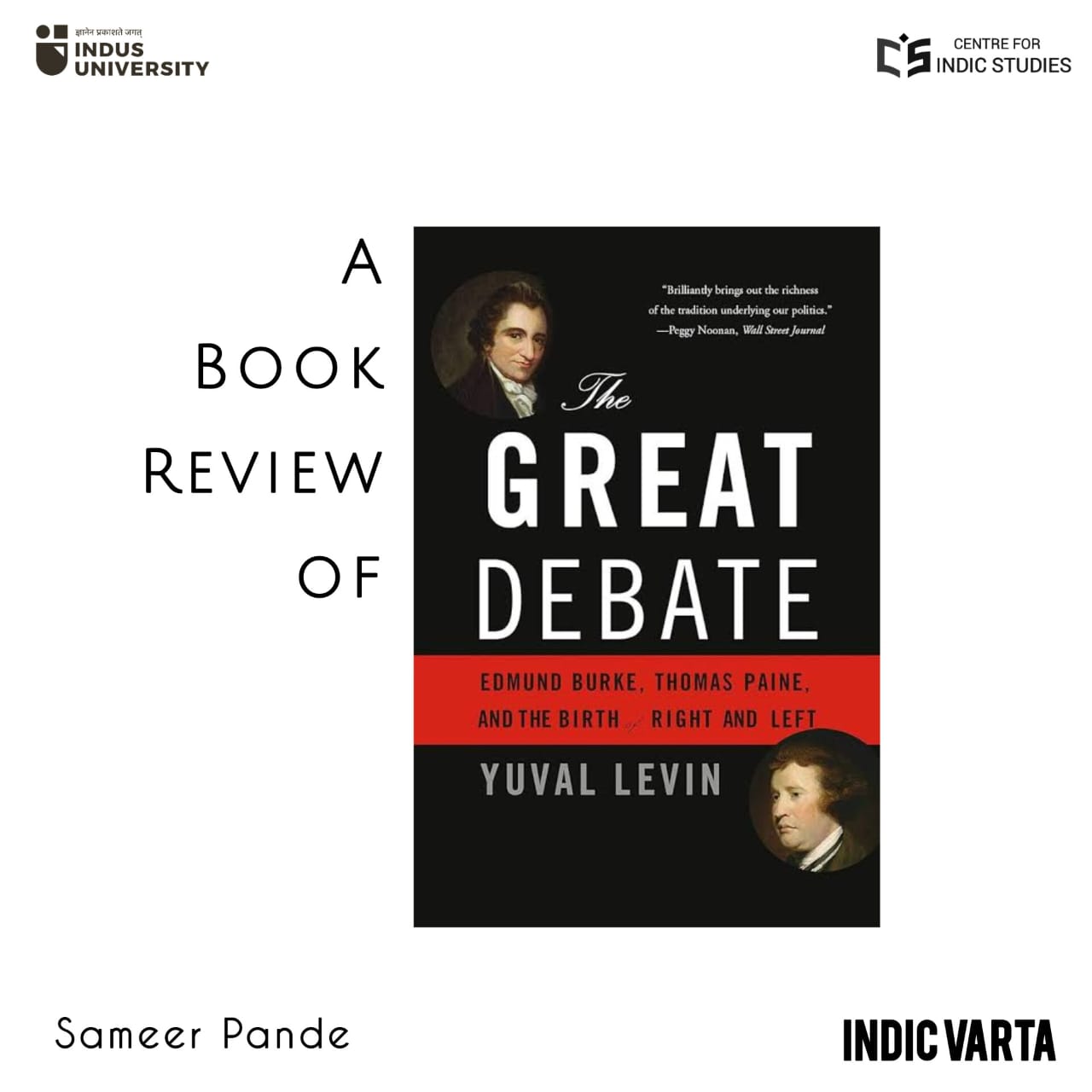- Visitor:28
- Published on: 2024-10-21 07:27 pm
Review on Bharata, the Nāṭyaśāstra: Understanding methods of Texual Interpretation
By analyzing Kapila Vatsayana's interpretive approaches this time, we can discover deeper meanings within the Mahabharata, revealing the complex narratives and philosophical ideas it contains. This comparison highlights not only Vatsayana’s scholarly contributions but also the ongoing importance of the Mahabharata in modern discussions about art, ethics, and human experiences. Through this exploration, we aim to show how the principles of interpretation can connect ancient texts with contemporary readers, demonstrating their relevance across time and culture.

“Bharata: the Nāṭyaśāstra”
by Kapila Vatsayana is a key work that not only deals with understanding
various sorts of interpretations applicable to the popular ancient Indian
Natyasastra text but also helps us understand various minute to minute
definitions and technical terms related to the subject of Indian drama.
However, this article does not aim to review the book but rather to explore how
Vatsayana's methods of interpretation can be applied to other important texts,
particularly the Mahabharata. The Nāṭyaśāstra provides valuable insights into
various artistic expressions and emphasizes the significance of context,
creativity, and the role of interpreters in understanding a text. By analyzing
Kapila Vatsayana's interpretive approaches this time, we can discover deeper
meanings within the Mahabharata, revealing the complex narratives and
philosophical ideas it contains. This comparison highlights not only
Vatsayana’s scholarly contributions but also the ongoing importance of the
Mahabharata in modern discussions about art, ethics, and human experiences.
Through this exploration, we aim to show how the principles of interpretation
can connect ancient texts with contemporary readers, demonstrating their
relevance across time and culture.
1. Why Question of
Authorship is important in interpreting any text
The "Question of
Authorship" plays a pivotal role in interpreting ancient texts like the Nāṭyaśāstra
because it provides insight into the deeper meaning and cultural context behind
the work. Bharata, often considered the author of the Nāṭyaśāstra, may not
represent a single individual but rather a collective embodiment of an artistic
community. This collective voice reflects the shared traditions, knowledge, and
artistic practices of performers and ballad singers from an era preceding
formal drama. Bharata’s role transcends personal identity, symbolizing a
unified artistic and philosophical vision.
Kapila Vatsayana
emphasizes that the focus of interpreting such texts should not solely be on
identifying the "who" and "when" of the creation but rather
on understanding the "what" and "why." The creation of
dramatic art, as described by Bharata, requires the transcendence of personal
identity to a larger, universal self, allowing for the development of
principles and theories that reflect this broader collective vision. The term
"Bharata" might therefore represent not an individual, but a symbol
of an entire tradition of practitioners who transmitted emotional expressions
(rasa and bhāva) and philosophical insights through performance.
Bharata’s relationship
with his "hundred sons" symbolizes the transmission of knowledge
across generations, underscoring the collective nature of dramatic tradition.
The ethical dimensions in the text, particularly the consequences of misusing
creative power, reinforce the sacredness of the craft. Bharata’s teachings,
regarded as the fifth Veda, emphasize that dramatic art is not mere
entertainment but a sacred duty that reflects a cosmic order, demanding
discipline, humility, and ethical responsibility.
Therefore, the question
of authorship in interpreting the Nāṭyaśāstra or similar ancient works like the
Mahabharata is not just about identifying the author but understanding how the
text embodies collective wisdom, spiritual tradition, and ethical imperatives
that have shaped cultural evolution over time.
Just as "The
Question of Authorship" is vital for understanding the Nāṭyaśāstra, it
also applies to the Mahabharata. Sage Vyasa, attributed as the author, lived in
a time of political and social upheaval, reflecting themes of duty and war.
This historical context shapes the epic’s narrative. Moreover, debates over
whether Vyasa wrote it alone or with contributions from others parallel similar
discussions around the Nāṭyaśāstra. Vyasa's ancestry (Bhrigu lineage) and
descandants including figures like Dhritarashtra and Vidura, deeply influences
the story, while his son, Sukh Deva, plays a metaphorical role in understanding
its philosophical depth (just like Bharata’s hundred sons).
2. 2. Understanding why Pre-text and Context is significant in interpreting any text?
Kapila Vatsyayan’s
exploration of the Nāṭyaśāstra in Chapter 2, Pre-text and Context, highlights
the necessity of understanding the foundational elements (pre-text) and
surrounding circumstances (context) when interpreting any ancient work. The Nāṭyaśāstra,
attributed to Bharata, is not merely a treatise on drama and performance but is
deeply embedded in Vedic traditions and rituals, making it a “fifth Veda” that
bridges art and spirituality. By delving into the Vedic influences on the text,
including its ties to the Upanishads and Brahmanas, Vatsyayan shows that
understanding the philosophical and spiritual pre-text is essential to grasp
the deeper meanings behind Bharata’s theories of performance.
The Nāṭyaśāstra is
built upon a complex structure of Vedic knowledge, encompassing the arts,
mathematics, linguistics, and metaphysical ideas. Bharata draws on these
pre-existing cultural and spiritual elements to shape his understanding of
human expression. For instance, the depiction of Krishna’s divine play (lila)
and devotion (bhakti) is integral to both the narrative and the moral lessons
embedded in the text. Krishna’s teachings to Arjuna in the Bhagavad
Gita—focused on duty and self-realization—mirror the underlying spiritual
truths conveyed through the art of performance in the Nāṭyaśāstra.
Moreover, the context
in which the Nāṭyaśāstra was composed—between the 2nd century BC and the 2nd
century AD—provides crucial historical and cultural insights. The linguistic
richness of the text further demonstrates how Bharata’s choice of words and
techniques reflects his deep knowledge of human psychology and spiritual
practice. Understanding the pre-text allows us to see the philosophical roots,
while the context explains the text’s relevance and evolution over time. Thus,
the interplay of pre-text and context is essential for interpreting the Nāṭyaśāstra
in its entirety, much like other classical works.
Understanding pretext
and context is crucial for interpreting any text, as it allows us to uncover
the deeper meanings beyond the surface. In the Nāṭyaśāstra, the language is not
merely functional but serves as a vehicle for conveying complex emotions and ideas.
Kapila Vatsyayan’s analysis reveals how Bharata’s linguistic choices reflect a
deep understanding of human psychology and the art of performance. Bharata’s
comprehensive approach to Indian performance traditions, which integrates
music, dance, and drama, highlights the cultural richness embedded in the text.
Without understanding these pre-textual elements—rooted in Vedic traditions—and
the broader cultural context, the nuances of Bharata’s work would remain
inaccessible.
In
sum, understanding both pre-text and context allows interpreters to appreciate
the full scope of the Nāṭyaśāstra’s artistic and spiritual contributions,
making it a timeless work of Indian aesthetics.
Similar to the Nāṭyaśāstra, the Mahabharata requires an understanding of pre-text and context, where Vyasa’s role as the author can be questioned and explored. The text draws heavily on Vedic and Upanishadic wisdom, particularly in the Bhagavad Gita, where Krishna's teachings about duty (dharma) and the eternal soul align with Upanishadic philosophy. The interplay of divine influence, mythology, and moral instruction shows that Vyasa, like Bharata, was not creating in isolation but building upon a rich spiritual tradition. Authorship in both works reflects the deep connections between the sacred texts and the cultural context in which they were composed.
3. Why Understanding the
Role of Core Primary Text is Necessary
Understanding the role
of core primary texts, such as Bharata, the Nāṭyaśāstra, is crucial for
meaningful interpretation. The Nāṭyaśāstra offers foundational knowledge about
Indian performance traditions, blending aesthetics, psychology, and philosophy.
Kapila Vatsyayan's analysis emphasizes the authenticity and transmission of the
text, revealing how its manuscripts have evolved since the 12th century. This
historical context is vital, as variations in manuscripts may affect
interpretations of critical concepts, such as the nature of performance and its
emotional impact.
The contributions of
commentators like Abhinavagupta further enhance our understanding. His
commentary, Abhinavabhārati, clarifies ambiguities in the original text,
bridging the gap between ancient wisdom and contemporary interpretation.
Without these insights, readers may overlook the text's intricate layers,
missing the interplay between theory and practice.
Readers should also
consider the variations in manuscripts and their implications for
interpretation. For example, recognizing the differences between Northern and
Southern recensions of the Mahabharata allows for a more nuanced understanding
of its themes and characters.
Similar to the Nāṭyaśāstra,
the Mahabharata showcases how different versions and regional adaptations
enrich the narrative. Various interpretations, such as those from Adi
Shankaracharya and Ramanujacharya, illuminate distinct philosophical
perspectives within the epic, particularly concerning themes of dharma and
morality. The Southern and Northern recensions of the Mahabharata offer diverse
viewpoints that shape our understanding of characters and their ethical
dilemmas.
Ultimately, core
primary texts provide a framework for exploring cultural, historical, and
philosophical contexts. They reveal how art and literature reflect human
emotions and societal norms, enabling readers to engage deeply with the
material. Understanding these elements allows us to appreciate the complexity
of texts, leading to richer interpretations that honor their original intent
and cultural significance.
Additionally, analyzing
how local traditions shape narratives fosters a deeper appreciation for
cultural diversity within texts. By incorporating these strategies,
interpreters can honor the richness of core primary texts, leading to more
profound insights and connections to broader philosophical and ethical questions
inherent in literature.
4. The Need of Implicit
and Explicit Texts to interpret a Core Text
Implicit and explicit
textual interpretation is essential for uncovering the full depth of any text,
as it allows readers to engage with both the surface-level narrative and the
underlying symbolic or philosophical meanings. In Chapter 3 of Bharata’s Nāṭyaśāstra,
Kapila Vatsayana illustrates this by examining how both explicit and implicit
interpretations reveal the essence of Indian drama.
Explicitly, the Nāṭyaśāstra
provides technical guidelines for performance, including diction, gestures, and
narrative structure. However, Vatsayana urges readers to explore implicit
meanings, particularly how these performances connect to deeper spiritual and
cosmic dimensions. The concept of yajna (sacrifice) is central here,
symbolizing not only ritualistic offerings but also the broader spiritual acts
of creation and destruction mirrored in drama. By linking the human body’s role
in performance with the cosmic act of creation, Vatsayana shows that drama is
not merely entertainment—it serves as a profound medium for spiritual
exploration. The dual approach to understanding art highlights that proper
training of both the body and mind is necessary for achieving mastery in performance.
Imagination plays a crucial role, transforming artistic expression into a form
of spiritual practice that resonates with the larger universe.
This method of interpretation is equally vital in understanding texts like the Mahabharata. Explicitly, the Mahabharata recounts the Kurukshetra War and its complex moral dilemmas. Yet, implicit readings reveal the philosophical and cosmic dimensions, such as the dialogue between Krishna and Arjuna in the Bhagavad Gita, which addresses profound themes like dharma (duty) and the nature of existence. The Mahabharata, much like the Nāṭyaśāstra, connects individual actions to universal principles, illustrating how explicit and implicit interpretations work together to uncover a text's deeper meaning and broader significance.

5. The Importance of Creative Expressions in Understanding Core Texts
The interplay between
creative arts and literary texts like the Nāṭyaśāstra demonstrates how various
art forms—sculpture, painting, and dance—are essential in interpreting and
deepening our understanding of ancient works. Bharata’s Nāṭyaśāstra goes beyond
being a text on performance; it acts as a bridge between the written word and
visual expressions of cultural narratives. For instance, Bharata emphasizes the
significance of physicality in performance, which extends to the role of
sculpture. Sculptures, such as those found in temples, depict static yet
dynamic representations of human experiences, emotions, and spiritual journeys.
These sculptures allow audiences to engage with the themes, characters, and
cultural contexts embedded within the Nāṭyaśāstra, making them essential tools
for interpretation.
Sculpture, in this
sense, becomes a vital medium through which the text’s layers of meaning are
revealed. The physical form, such as the depiction of divine figures or
mythological narratives, mirrors the Nāṭyaśāstra's emphasis on human movement
and emotional expression in performance. Temples and monuments showcasing these
sculptures reflect key narratives, creating a visual representation that
reinforces the text's teachings. For example, temple carvings of dance postures
and gestures serve as an artistic reflection of the aesthetic principles in the
Nāṭyaśāstra, offering a holistic approach to understanding the text’s cultural
and spiritual messages.
Moreover, the idea of
the stupa, as highlighted in Kapila Vatsayana’s analysis, connects the
architectural and artistic symbolism of spiritual journeys with characters from
the Mahabharata and Nāṭyaśāstra. These physical forms invite viewers into a
shared experience of the text, blending the visual and written narratives.
Incorporating these
artistic elements into the interpretation of the Nāṭyaśāstra allows for a
richer understanding of its core ideas. Sculpture, painting, and architecture work
together to bring the text’s philosophy and aesthetics to life, providing
layers of meaning that engage audiences across time and culture.
Similarly, painting
plays a crucial role in bringing textual narratives to life. Indian painting
traditions, inspired by the Mahabharata, serve as visual interpretations of the
epic’s events. Famous paintings such as Raja Ravi Varma’s Draupadi
Vastrapaharan or depictions of Krishna guiding Arjuna's chariot deepen our
engagement with the Mahabharata’s core themes of duty, conflict, and moral
complexity. These artistic renderings are not mere illustrations; they bring a
heightened emotional and philosophical dimension to the text, allowing viewers
to experience its essence through a creative lens.
In conclusion, the relationship
between text and creativity offers a multidimensional approach to
interpretation. Through sculptures and paintings, the intricate meanings of
texts like the Nāṭyaśāstra and the Mahabharata are made more accessible,
offering viewers and readers a richer, more profound understanding. Creative
expressions are not just reflections but essential tools that help us grasp the
full complexity of these timeless works.
6. Understanding the
Inflow and Outflow: Unraveling the Core of any text
In Kapila Vatsayana’s
Nāṭyaśāstra, the chapter “Text: The Inflow and Outflow” examines how
understanding the inflow of influences and the outflow of impact is crucial to
grasping the essence of any text. This dynamic flow of ideas not only reveals
the intellectual roots of the Nāṭyaśāstra but also highlights its lasting
cultural significance.
The Nāṭyaśāstra draws
heavily from foundational texts like the Vedas, Upanishads, and various
treatises on arts, integrating their philosophies into a comprehensive treatise
on drama, music, and dance. The inflow of these diverse elements provides a
window into the worldview that shaped Indian aesthetics, embedding notions of
dharma (righteousness), artha (wealth), and moksha (liberation) within its
framework. This philosophical grounding allows the Nāṭyaśāstra to resonate with
deep cultural values, making it more than a technical manual—it becomes a
reflection of Indian societal ideals.
In terms of outflow,
the Nāṭyaśāstra has profoundly influenced subsequent generations. It provided
the foundation for later texts on music, like the Brhaddesi and
Sangitaratnakara, and in dance, such as the Abhinayadarpana. Its principles
permeate Indian art forms, enriching performances across various genres. This
continuous outflow of creative expression underscores how the Nāṭyaśāstra
remains a living document, evolving and inspiring across centuries. By
understanding these dynamics, one sees the text not as a static artifact but as
a pivotal force in the flow of artistic and intellectual life in India.
Similarly, the
Mahabharata embodies this principle of inflow and outflow. The inflow comes
from earlier texts like the Vedas and Upanishads, whose themes of self, duty,
and the cosmos inform its moral and philosophical inquiries, as seen in
episodes like Yudhishthira’s debate with the Yaksha. The outflow of the
Mahabharata is equally profound, influencing subsequent literature, from the
Bhagavata Purana to the works of Kalidasa and Rabindranath Tagore, expanding
the epic's relevance in Indian cultural life. Understanding this dynamic
interplay enhances the interpretation of the text’s philosophical and cultural
depth.
7. The Vital Role of
Interpreters
In Kapila Vatsayana's
Nāṭyaśāstra, the chapter "The Text and the Interpreters" underscores
the crucial role interpreters play in shaping the understanding of texts.
Vatsayana highlights the contributions of Kashmiri scholars like Abhinavagupta,
Bhatta Lollata, and Srisankuka, who provided key insights into fundamental
concepts such as rasa (aesthetic experience) and sthayibhava (dominant
emotion). Their interpretations, especially Abhinavagupta’s integration of
Shaiva philosophy, elevated the Nāṭyaśāstra beyond a technical manual on
performing arts to a comprehensive philosophical discourse on aesthetics.
These scholars deepened
the appreciation of the Nāṭyaśāstra, adding layers of meaning that reflect
cultural shifts and intellectual developments. Their interpretations
demonstrate how the text’s significance has evolved over time, revealing the Nāṭyaśāstra
as a dynamic, living work. Each scholar’s unique perspective, whether focused
on aesthetics or philosophical inquiry, contributes to an ongoing dialogue that
keeps the text relevant across generations. By examining how these commentators
shaped the understanding of key concepts, Vatsayana emphasizes that the role of
interpreters is essential for fully grasping the text's cultural and
philosophical importance.
Similarly, the
Mahabharata also benefits from diverse interpretations. Sri Aurobindo, for
example, infused the epic with his own philosophy of evolution and
consciousness, transforming it into a spiritual guide. His retelling in Savitri
emphasizes the inner struggles of the soul, offering a deeper, spiritual
interpretation of the epic's themes.
V. S. Sukthankar's work
on the Critical Edition of the Mahabharata ensured that scholars could engage
with a reliable version of the text, while Nrisingha Prasad Bhaduri's
psychological interpretations and Vishwa Adluri's exploration of subtales added
modern perspectives. These interpretations ensure the Mahabharata remains a
vital, evolving source of cultural and philosophical wisdom, showcasing how
interpreters enrich our understanding of its complexities.
- 14 min read
- 0
- 0










